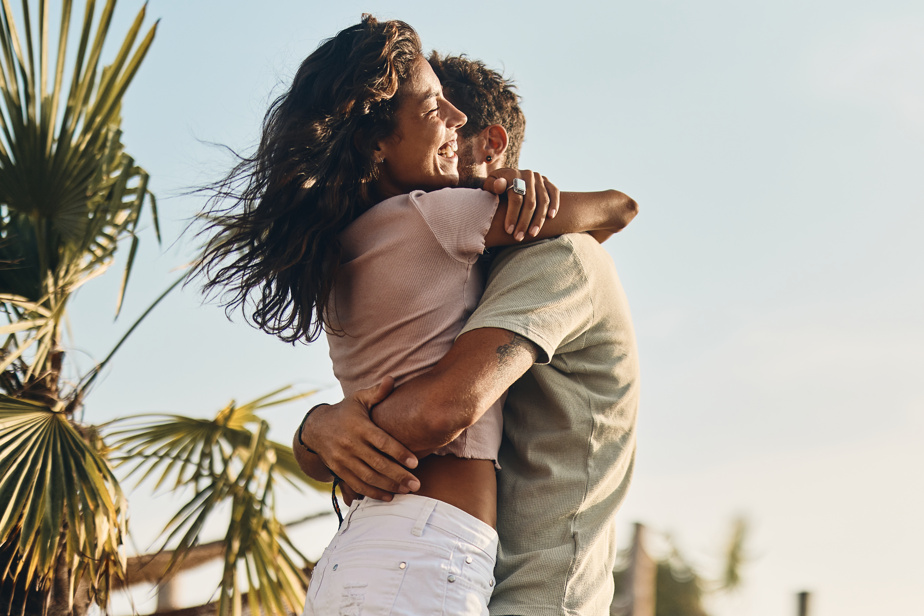(Montreal) Around 10% of young people aged 18 to 29 who, in 2021-2022, said they had been in an intimate, romantic relationship or in contact with an ex-partner in the previous year, experienced some form of violence during this period, according to new data from the Institute of Statistics of Quebec (ISQ).
According to the results of the Quebec Survey on Violence Committed by Intimate Partners, released Monday, 6% of those who reported having been in a relationship in the previous year suffered psychological violence, 3.6% physical violence and 5% of sexual violence.
Young women are proportionally more likely than men to have experienced at least one form of violence, 13% compared to 7%. They are notably more numerous than men to have suffered psychological (8% versus 4.5%) or sexual violence (8% versus 2.5%).
This would only be “the tip of the iceberg,” according to professor in the sexology department at UQAM Natacha Godbout. “We don’t see the full extent of what’s underneath. When we look at a little more detailed data and if we have a little more precise questions, we will catch even more violence within relationships,” she maintains.
His colleague Alison Paradis, professor in the psychology department at UQAM, also believes that the results of the survey are lower than what one would expect. “The items they used are items that are generally considered more severe forms of violence. It is a good representation of this type of violence, but it does not cover all the types of violence that can be found in romantic relationships, which may explain the differences in the rates that we observe,” indicates -She.
The measure of violence used by the ISQ is based on the Composite Abuse Scale (Revised) – Short Form (CASR-SF). It contains 16 acts of violence divided into psychological, physical and sexual categories.
The consequences experienced by young victims are similar to those experienced by older adults. Ms. Godbout, who is also director of the research and intervention unit on TRAuma and Couple (TRACE), talks about post-traumatic stress, a questioning of oneself, an internalized feeling not worth being treated with dignity. Among other things, there will be obstacles to identity development and relational development, she adds.
Ms. Paradis points out that young people are evolving in a period where they are forming their identity. “It is certain that these experiences will have similar consequences as if we live them later, but they can have a greater impact in the long term because we live them in a developmental period where we are so sensitive to what we are living. The consequences can be amplified,” she explains.
In addition, young people do not have a solid relationship experience, so they will often not be able to recognize behavior that is unacceptable, points out Ms. Godbout. “The first experience of violence at a young age, adolescence or young adult, has decisive consequences,” she says.
The sexologist emphasizes the importance of peers. For aggressive people, they will allow them to “cultivate a questioning of their own behavior”.
If those around them immediately tell the victim that what they are experiencing is not acceptable and on the other hand those close to the attacker express that what they did is not right, “we have just potentially changed the course of things.”
“There is an extraordinary window of opportunity, but if we miss it, we may have chronicized or exacerbated behaviors and consequences,” explains Ms. Godbout.
Young people who have experienced violence or who have had it in their family will tend to reproduce these actions.
Ms. Paradis, who also directs the Laboratory for Studies on the Well-being of Families and Couples (LEFAC) at UQAM, however, clarifies that rates of violence are generally higher in younger populations and tend to decrease with age. “So there is still some learning that takes place and not all young people are violent and will then be violent in their adult couple relationships,” she says.
The two experts argued that the prevalence was higher among certain marginalized populations, including young people from sexual and gender diversity, Indigenous people, people from cultural communities and people with physical disabilities.
These groups are more at risk of experiencing different types of violence within a relationship, but also of developing violent behavior. They are also more vulnerable when they denounce what they are experiencing. “They are more at risk of violence, of not disclosing it and of suffering the consequences, without help,” summarizes Ms. Godbout.




